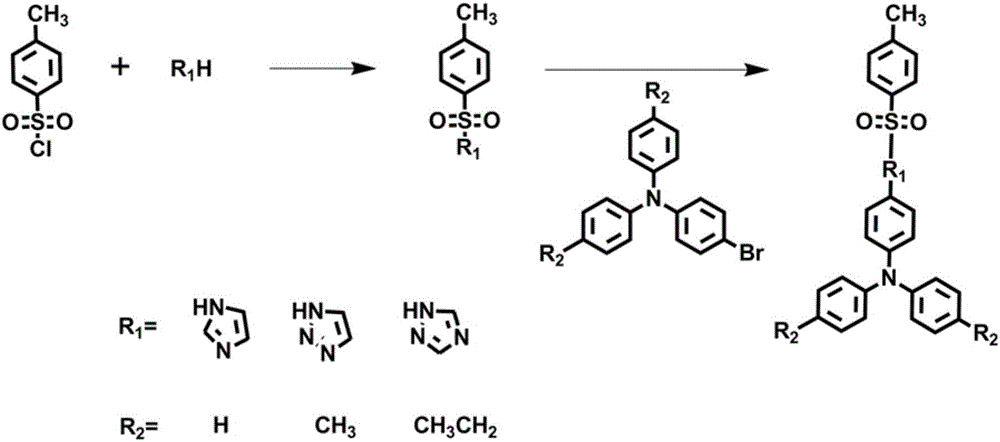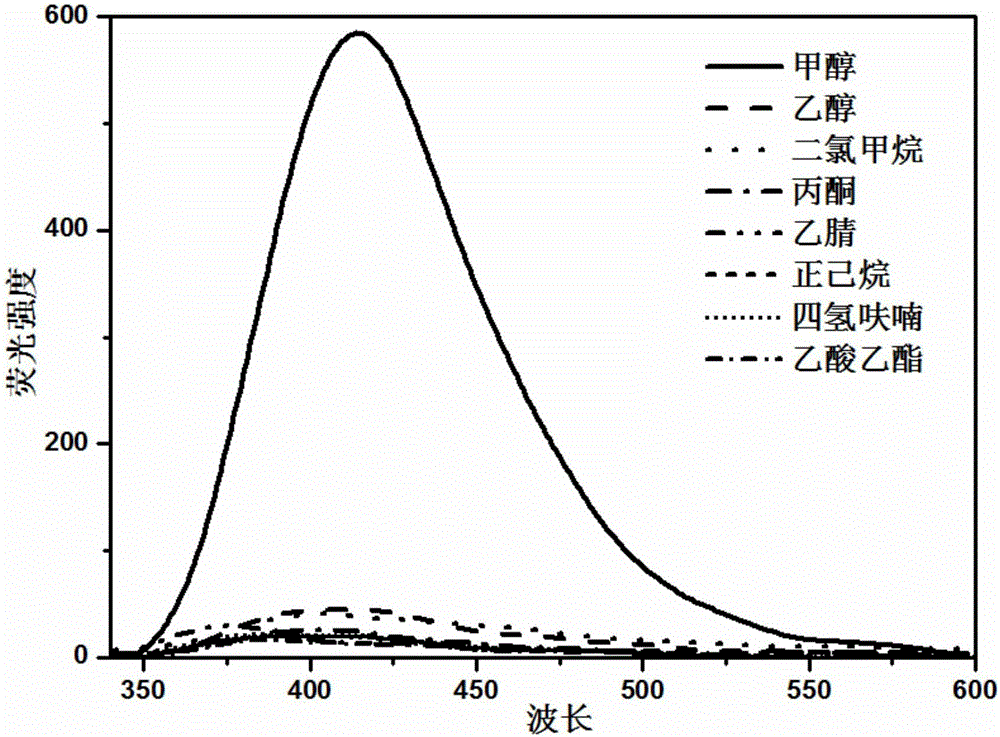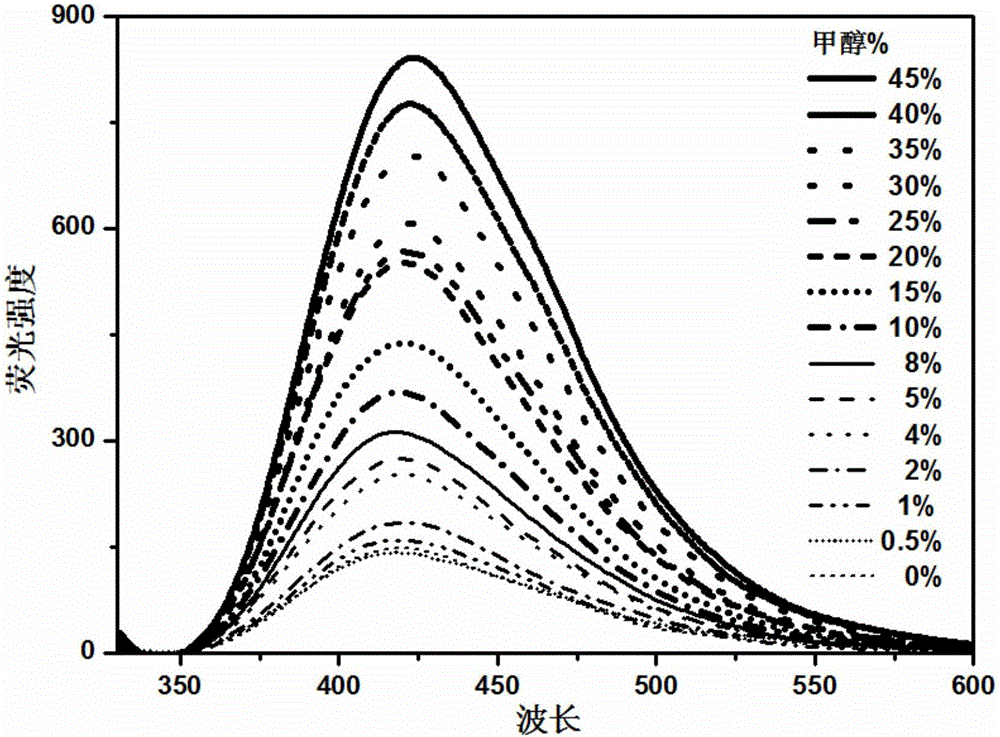Organic small molecular fluorescent probe for detecting methanol and preparation method of organic small molecular fluorescent probe
A fluorescent probe and small molecule technology, applied in the field of chemical substance synthesis, can solve the problems of unsuitable for rapid determination, lengthy steps, complicated operation, etc., and achieve the effects of mild conditions, convenient operation and strong response
- Summary
- Abstract
- Description
- Claims
- Application Information
AI Technical Summary
Problems solved by technology
Method used
Image
Examples
preparation example Construction
[0016] A kind of preparation method of the organic small molecule fluorescent probe that detects methanol of the present invention, comprises the following steps:
[0017] Step 1: Preparation of 1-(p-toluenesulfonyl) imidazole: add dichloromethane and sodium bicarbonate aqueous solution in reaction flask, stir to form solution A, wherein, the volume ratio of dichloromethane and sodium bicarbonate aqueous solution is 3: 5; Add imidazole and tosyl chloride to solution A, the mass ratio of imidazole to p-toluenesulfonyl chloride is 1:3, and the mass volume ratio of tosyl chloride to dichloromethane is 1:4g / mL; After imidazole and p-toluenesulfonyl chloride were dissolved, triethylamine was added to the above solution, and the triethylamine accounted for 0.7% by volume of solution A, and stirred at room temperature for 12 hours; the aqueous phase after liquid separation was extracted with dichloromethane, organic The phase is dried with anhydrous magnesium sulfate, the filtrate is...
Embodiment 1
[0019] Embodiment 1: The preparation of organic small molecule fluorescent probes for detecting methanol is as follows:
[0020] Step 1. Preparation of 1-(p-toluenesulfonyl)imidazole: Add 150mL dichloromethane and 250mL aqueous sodium bicarbonate solution into the reaction flask, start stirring, then add 12.75g imidazole and 38.25g p-toluenesulfonyl chloride, and wait for the solid to dissolve Finally, 3 mL of triethylamine was added to the above solution, and stirred at room temperature for 12 hours; the aqueous phase after liquid separation was extracted with dichloromethane, the organic phase was dried with anhydrous magnesium sulfate, and the filtrate was obtained by suction filtration, concentrated by rotary evaporation to 50 mL, and added 13 mL of a low-polarity organic solvent was left to stand overnight to obtain a crude product, which was filtered and washed twice with a low-polarity organic solvent, and the obtained crystals were vacuum-dried at 30°C for 6 hours to ob...
Embodiment 2
[0023] Embodiment two: if figure 2 As shown, the fluorescence emission spectra of the fluorescent probe prepared in the present invention in different solvents are as follows, wherein the fluorescence detection condition is a slit width of 2.5 / 2.5. The detection method of methanol is a fluorescence detection method, and the maximum emission wavelength is different under the same excitation wavelength of the substance in different solvents, and the fluorescence intensity is also different. It can be used for the determination of methanol content in different solvents, and can quickly detect the content of methanol.
[0024] (1) At room temperature, weigh 0.02g of the fluorescent probe of the present invention prepared in advance, soak it in 100mL of n-hexane for two minutes, filter it quickly, prepare a sample for testing, the excitation wavelength is 320nm, and the emission wavelength is 375nm. The fluorescence intensity was 30, and the emission wavelength curve of the probe...
PUM
 Login to View More
Login to View More Abstract
Description
Claims
Application Information
 Login to View More
Login to View More - R&D
- Intellectual Property
- Life Sciences
- Materials
- Tech Scout
- Unparalleled Data Quality
- Higher Quality Content
- 60% Fewer Hallucinations
Browse by: Latest US Patents, China's latest patents, Technical Efficacy Thesaurus, Application Domain, Technology Topic, Popular Technical Reports.
© 2025 PatSnap. All rights reserved.Legal|Privacy policy|Modern Slavery Act Transparency Statement|Sitemap|About US| Contact US: help@patsnap.com



